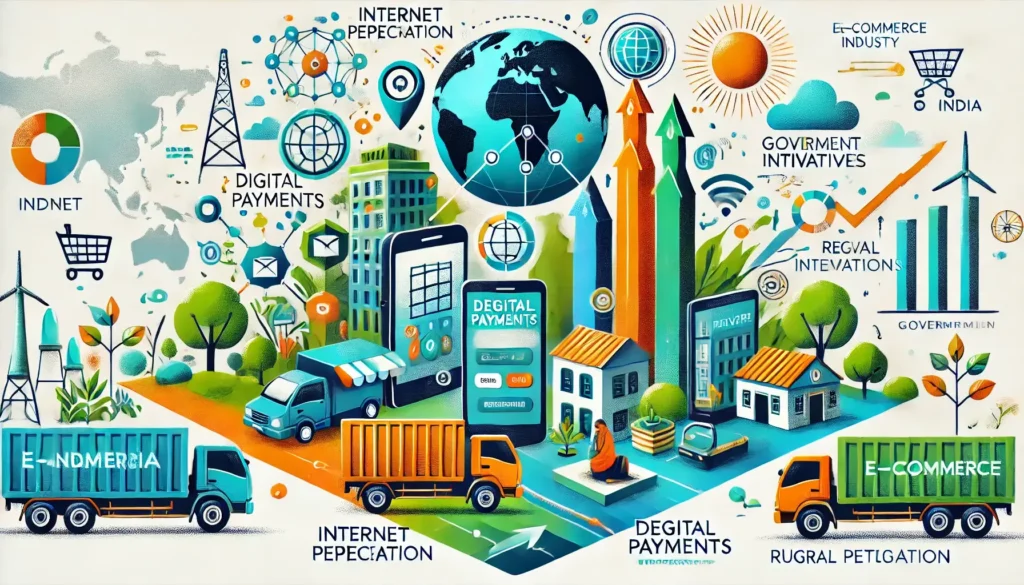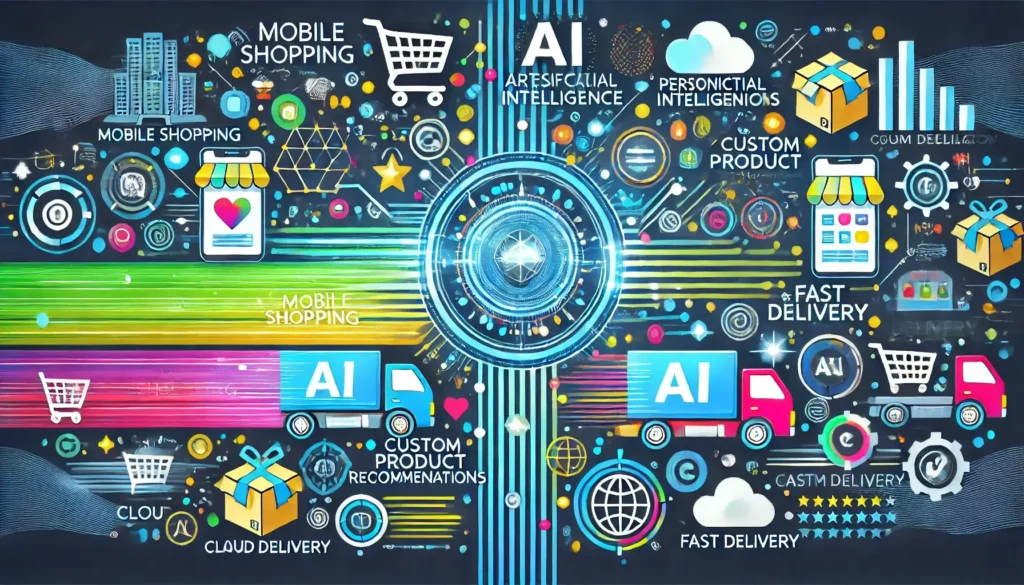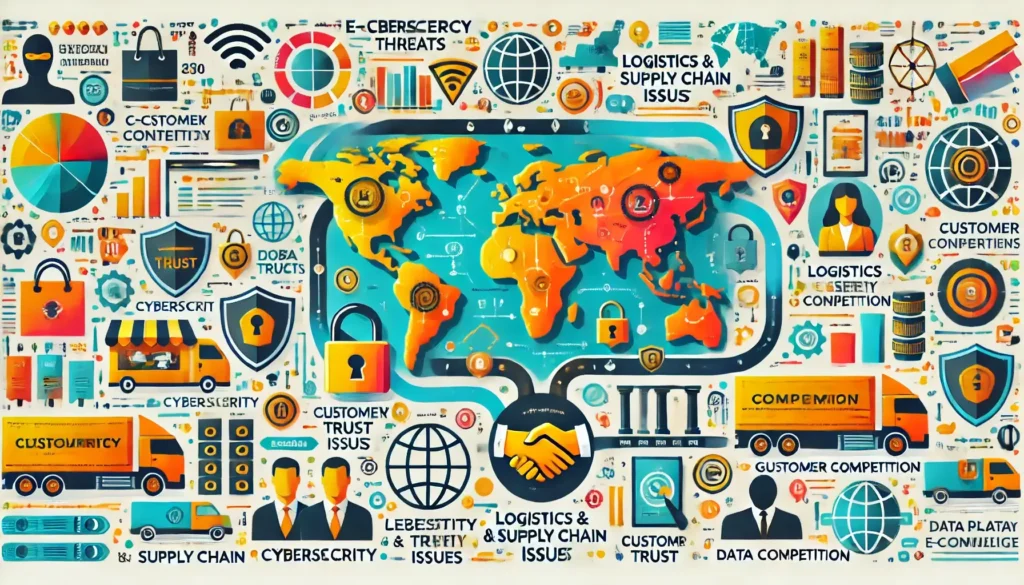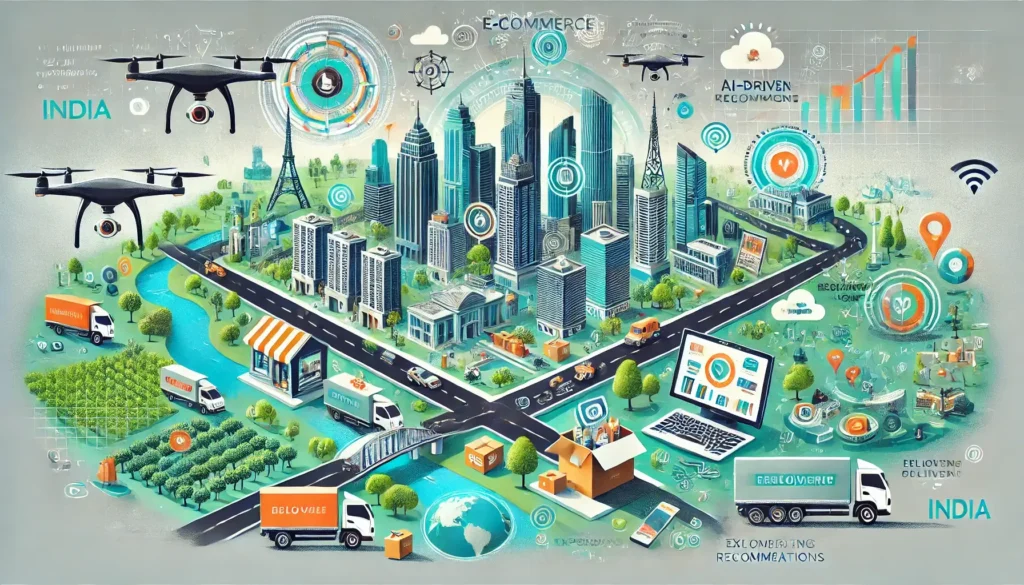The Growing E-Commerce Landscape in India
India’s e-commerce sector is experiencing a dramatic surge, driven by technological advancements, increased internet penetration, and shifting consumer behaviors. As one of the fastest-growing digital markets in the world, India’s e-commerce landscape presents both opportunities and challenges for businesses and investors alike.
1. Market Overview
The Indian e-commerce market is projected to reach approximately $200 billion by 2026, driven by an expanding middle class, urbanization, and rising smartphone usage. The growth trajectory is supported by the increasing preference for online shopping among Indian consumers, who are attracted to the convenience, variety, and competitive pricing offered by digital platforms.
2. Key Drivers of Growth

- Internet Penetration: India has one of the largest online user bases globally, with over 700 million internet users. The proliferation of affordable smartphones and data plans has been a significant catalyst, enabling more people to access e-commerce platforms.
- Digital Payments: The adoption of digital payment methods, such as UPI (Unified Payments Interface), has streamlined transactions and increased consumer confidence in online shopping. Government initiatives and advancements in financial technology have also contributed to the growth of digital payments.
- Government Initiatives: Policies like “Digital India” and “Startup India” aim to foster a favorable environment for e-commerce businesses. These initiatives include infrastructure development, support for startups, and efforts to improve digital literacy.
- Rural Penetration: Increasing internet access in rural areas is opening up new markets for e-commerce companies. Innovations like local language support and tailored marketing strategies are helping businesses reach consumers in these regions.
3. Trends Shaping the Sector

- Omni-channel Retailing: Many traditional retailers are adopting an omni-channel approach, integrating their online and offline operations to provide a seamless shopping experience. This trend is becoming increasingly popular as businesses seek to blend the convenience of online shopping with the tactile advantages of physical stores.
- Rise of D2C (Direct-to-Consumer) Brands: Direct-to-consumer brands are gaining traction, leveraging digital platforms to bypass traditional retail channels and engage directly with consumers. This model allows for greater control over branding, customer experience, and profit margins.
- Personalization and AI: E-commerce companies are leveraging artificial intelligence and machine learning to offer personalized shopping experiences. Recommendations, chatbots, and targeted marketing campaigns are becoming standard features that enhance customer satisfaction and drive sales.
- Sustainability and Ethical Consumerism: Indian consumers are increasingly conscious of sustainability and ethical practices. E-commerce companies are responding by adopting eco-friendly practices, offering sustainable products, and transparently communicating their efforts to reduce environmental impact.
4. Challenges and Considerations

- Logistics and Supply Chain: Efficient logistics and supply chain management are critical for the success of e-commerce businesses in India. Challenges include infrastructure limitations, last-mile delivery issues, and regional disparities in service quality.
- Regulatory Environment: The regulatory landscape for e-commerce in India is evolving, with new policies and guidelines being introduced to address issues such as data privacy, taxation, and foreign investment. Navigating these regulations can be complex for both domestic and international players.
- Consumer Trust: Building and maintaining consumer trust is crucial. Issues such as counterfeit products, data security, and return policies need to be managed effectively to foster positive relationships with customers.
5. Future Outlook

The future of e-commerce in India looks promising, with continued growth expected in both urban and rural areas. Innovations in technology, evolving consumer preferences, and supportive government policies will likely drive further expansion. Companies that adapt to these changes, invest in technology, and prioritize customer experience will be well-positioned to thrive in this dynamic market.
In conclusion, India’s e-commerce sector is poised for substantial growth, driven by technological advancements and shifting consumer behaviours. As businesses and investors navigate this evolving landscape, understanding the key drivers, trends, and challenges will be crucial for success in one of the world’s most vibrant digital markets.Top of Form


Good to know about this growth